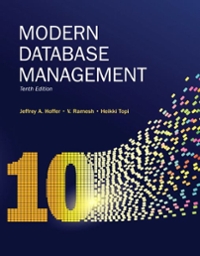Question
A few minutes ago, Johnny N. Prospect learned that his company was having a bad year and thus merit salary increases will be smaller than
A few minutes ago, Johnny N. Prospect learned that his company was having a bad year and thus merit salary increases will be smaller than expected. His division's budget has been set and so he knows that he will receive a salary increase of $3000 over his present salary. Mr. Prospect has also been offered a transfer to another division in the company. He is unsure of the salary situation in the other division. However, his best information leads him to conclude that if he took the new job, there is a 40% chance that he would receive a salary increase of $7000 over his present salary, and a 60% chance that he would receive only a $1000 increase over his present salary. To summarize, Johnny N. Prospect can either stick with his current job and get a salary increase of $3000, or take a transfer to a new job and get a salary increase of either $7000 with a 40% probability, or $1000 with a 60% probability.
a. If Mr. Prospect made his decision based using expected value, would Mr. Prospect choose to stay in his current job or take the transfer to the other division? Show your expected value calculations.
b. If Mr. Prospect made his decision consistent with the principles outlined in Prospect Theory and had a value function and decision weight function as outlined in the tables below, would Mr. Prospect choose to stay in his current job or take the transfer to the other division? Show your prospect theory calculations.
c. Based upon the evidence presented in the textbook and lectures, do you think Mr. Prospect is more likely to choose rationally using the expected value method, or according to the psychology of prospect theory? That is, do you think the expected value criterion or prospect theory is more likely to account for Mr. Prospect's actual choice in this situation. Why? Explain your reasoning.

Step by Step Solution
There are 3 Steps involved in it
Step: 1

Get Instant Access to Expert-Tailored Solutions
See step-by-step solutions with expert insights and AI powered tools for academic success
Step: 2

Step: 3

Ace Your Homework with AI
Get the answers you need in no time with our AI-driven, step-by-step assistance
Get Started


